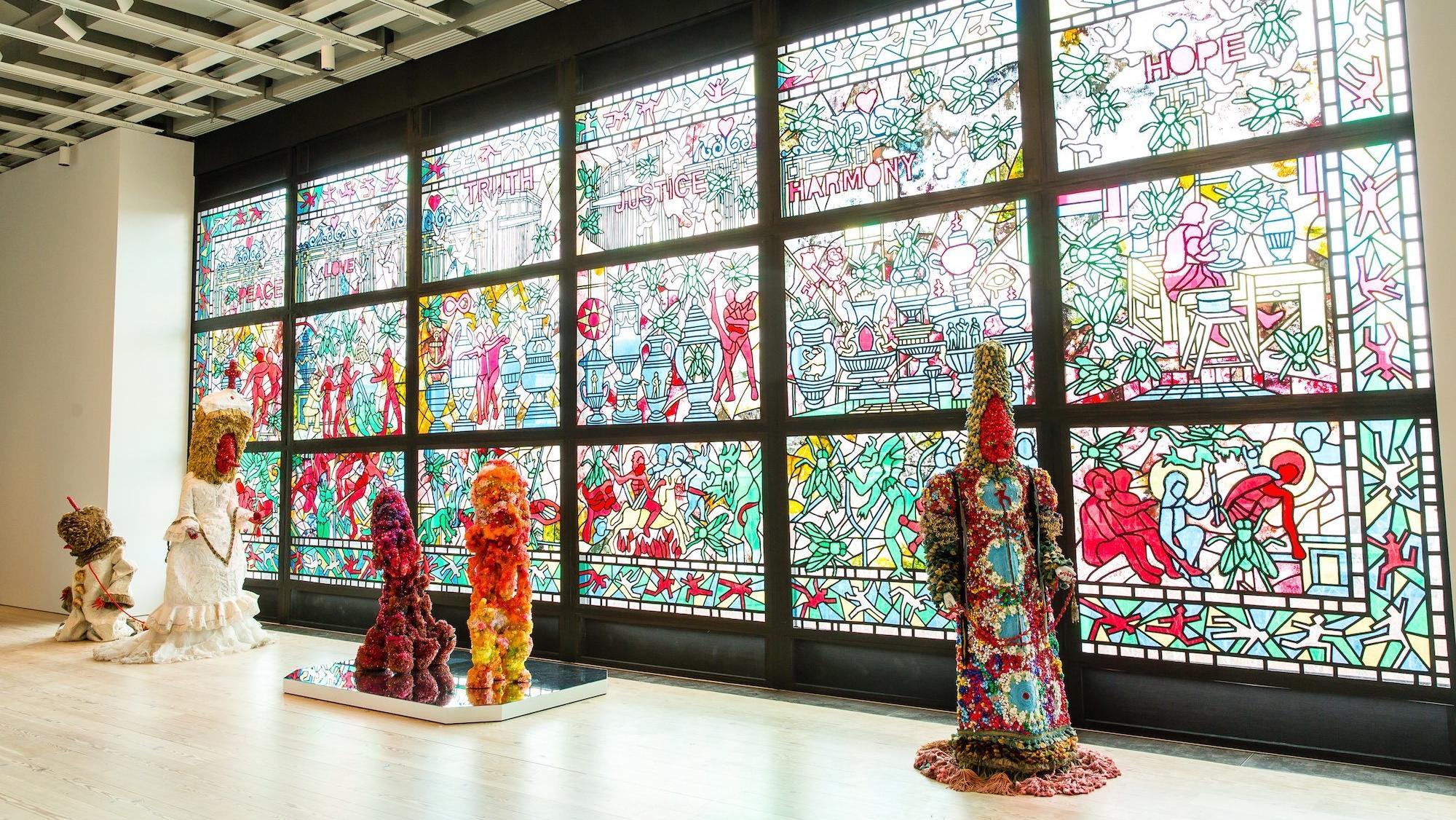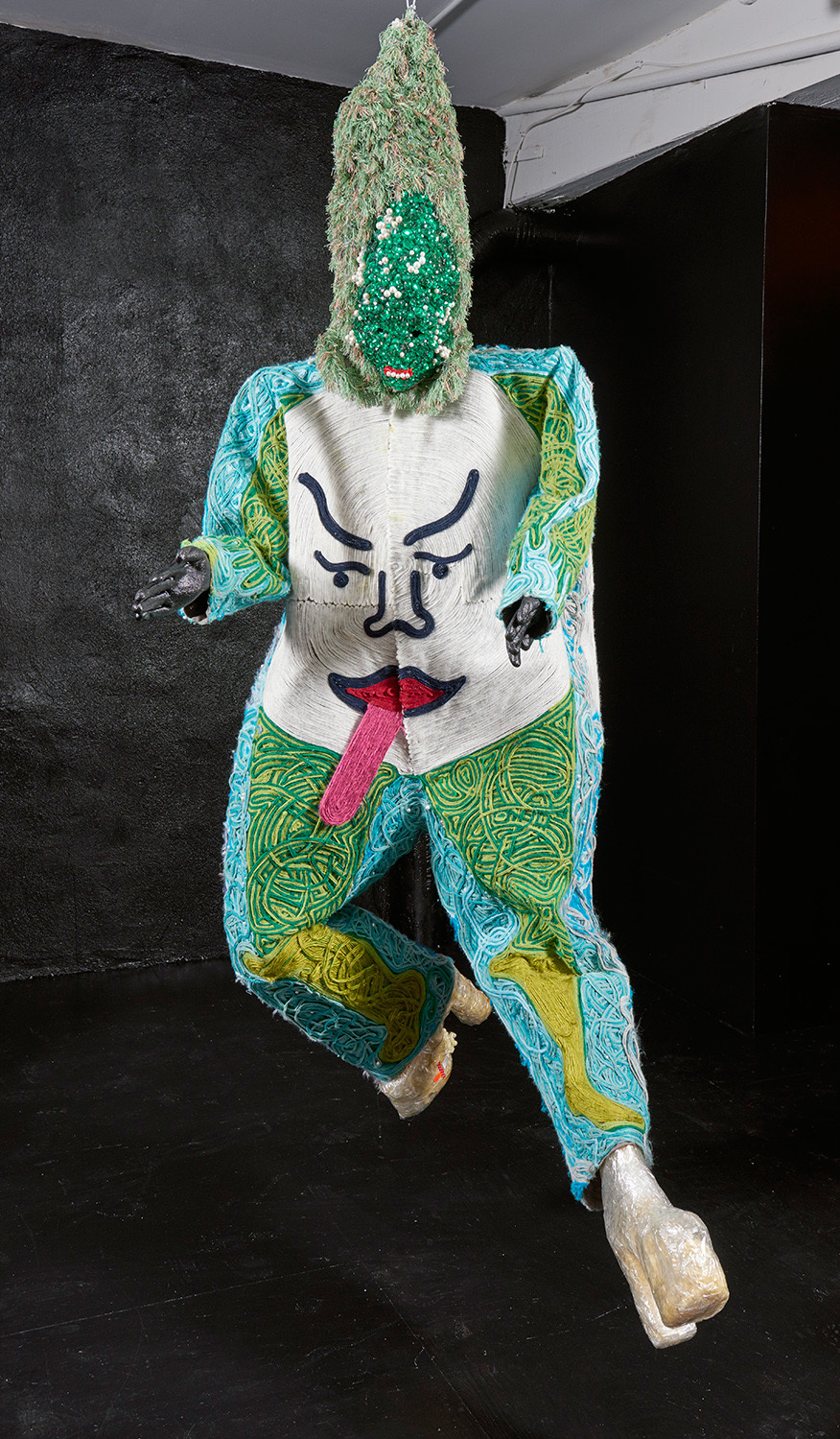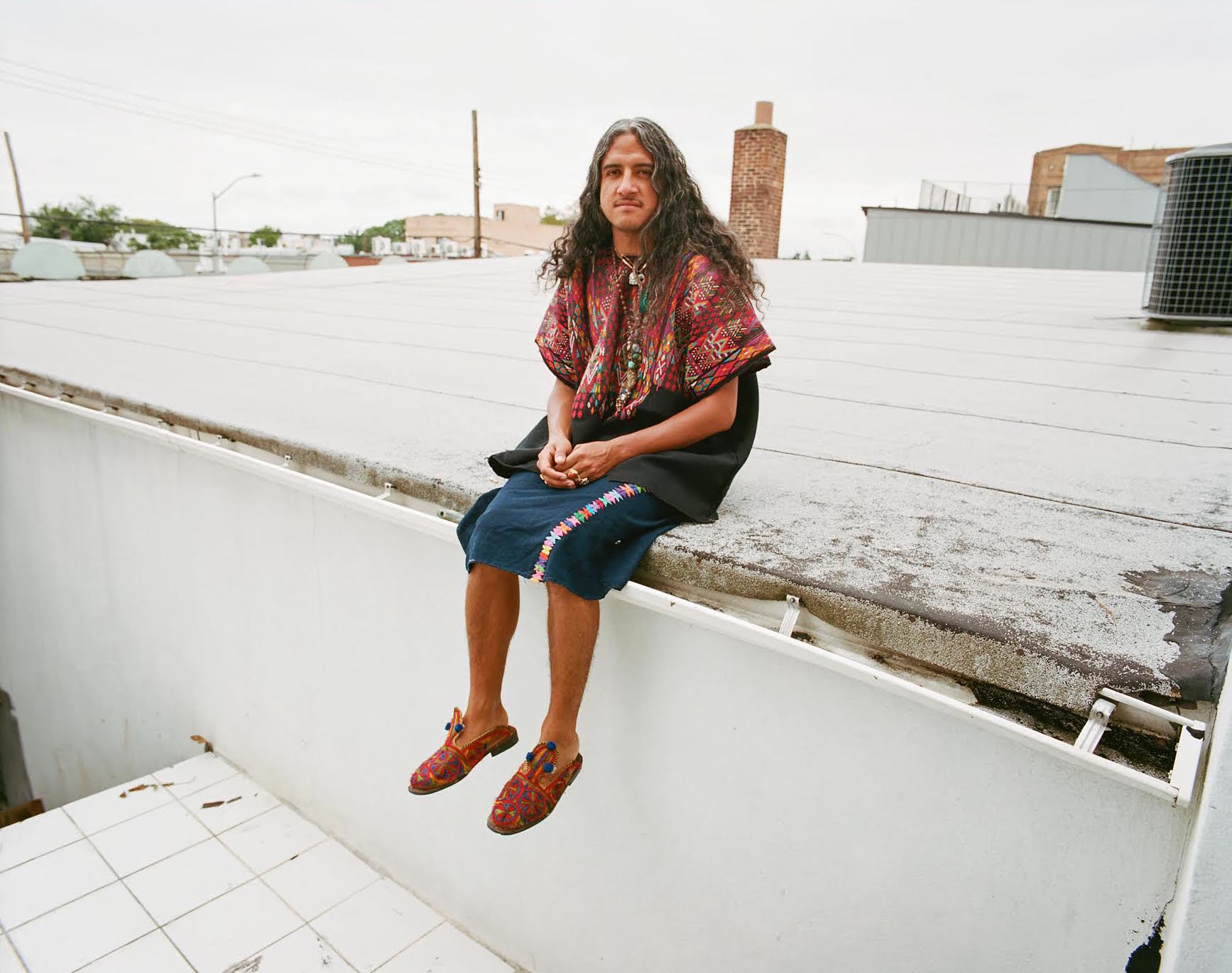Raúl de Nieves makes dazzling stained-glass windows in a windowless basement studio in Ridgewood. I access it by walking through a performance space-slash-hallway, tripping down an unlit staircase, and stepping over a few hundred spilled beads. When I enter the modest room, heavy techno pulsates from Raúl’s MacBook.
“There’s this idea of repetition happening,” he says of the music. “Essentially, when I started making art, it was through the experience of music. I would take records, and I would break all these records into pieces and glue them back together into dioramas. I was making all these little sets with tiny people. When I think about this, it’s all assemblage. I look for things that are familiar to me, like clothes or personal objects, and then transform them into something else.”
For the 2017 Whitney Biennial, Raúl installed an ecclesiastical stained-glass mural. It consisted of 18 panels covering six floor-to-ceiling windows, made from everyday objects like wood, glue, tape, and paper. Plastic beads like the ones littering his studio floor underwent a similar metamorphosis from humble to wonderful, transformed into opulent human-sized figures that glittered in the dappled rainbow of light created by the windows. He didn’t create the sculptures purely for the Biennial. “All those works have been used in performances,” Raúl says, referring to the experimental noise band Haribo — “Yeah, like the gummy bear” — that he formed with fellow artists Jessie and Nathan Whipple when he moved to New York around 10 years ago. A video teaser posted on Haribo’s official YouTube account “HARIBONER” features footage of Raul climbing over furniture in vinyl gogo boots during a show at the queer performance space Spectrum, which Raul lives underneath. In another, he plays a deranged courthouse judge stripping down to nylons and a pair of his signature beaded heels.

Most of the shoes Raúl makes these days are sculpted far beyond wearability. “This is a shoe that I wore for a long time,” Raúl says, pointing to a dizzying contortion of thousands of beads that stands about three feet high. “[The shoe] was such a personal thing that it’s allowed me to push myself to use it as a main structure. I like to salvage whatever I can in order to make something new.” He starts pulling broken platform and kitten heels out of a black laundry bag on the floor, each one waiting to start its own second life as a towering abstract sculpture.
Raúl approaches threading beads together like he does his improvisational performances with Haribo. “I have a vision, but the more I do it, the more it changes,” he says. “It’s hard to plan this out. It becomes more about just the rhythm.” Raúl’s teetering pastel “little baby” sculpture — which looks like a cross between a Brobdingnagian sea anemone and a doll doing the limbo — has been a work in progress for seven years, because he was “so obsessed with making it out of beads, but also thinking about balance.” Its official name is “Day(Ves) of Wonder” but he affectionately calls it “Dave.” By comparison, the shoes at the Whitney were quick to make, only taking about three years.

Raúl grew up in Michoacán, Mexico before moving to San Diego with his family at age nine. Michoacán is often associated with violence and drug cartels, but Raúl calls his childhood “one of the most beautiful things I could ever ask for,” and that it allowed him to experience the importance of rituals and craftsmanship. “There was way more poverty, but that didn’t stop people from being happy. People would find work on the streets, they would make jobs for themselves.” His family went to church, but it was a rather different religious experience he remembers most vividly, when he was a rebellious 12-year-old Marilyn Manson fan living in California. In an attempt to befriend a group of girls, he joined their Christian youth group, and failed to dress the part. “I was really moved by this idea of image,” Raúl remembers of seeing a Manson video on MTV. “Self-representation and how you can alter yourself. I would wear a Marilyn Manson patch, it was just on my backpack, and the pastor was like, ‘You’re going to go to Hell.’ When someone told me that, I was like, ‘How dare you? Tell that to a child?’ I understood that he was so wrong. I was like, ‘That’s not the world of God.’ When you say ‘love and unity,’ you’re excluding me.” (“Unity” is one of the words embedded in his stained glass windows, along with “Peace,” “Truth,” “Justice,” and “Harmony.”) Raúl began to start exploring his own understanding of religion, one that now involves ritualistic morning blessings and many hours sitting in church pews.

The stained-glass mural was largely about this personal metamorphosis, but it was also informed by events that were taking place when he started making it — specifically, the most insane presidential election in recent American history. This is when he got the idea of the fly as a metaphor for turning the deluge of depressing information into something positive. “My old studio had a backyard and we had a mulberry tree where the mulberries would fall on the floor,” he remembers. “They would ferment and get squished on and there would be flies everywhere. I could never kill a fly because of the sound. Then one day I saw these flies having sex on my table and I was like, “God damn these stupid flies, stop fucking!’ I threw something at them and it didn’t stop and I was like, ‘Wow that’s really amazing. They’re just fucking. They’re reproducing.’ I was like, ‘Oh my god, I’m like the fly.'”
In the finished mural, the fly appears to transform into a dove, representing the defeat of fear and the creation of something positive. “Right now the whole world is just fighting,” Raúl says. “That’s all we hear about. You go on Facebook or go on your phone and it’s death, death, death; bombs, bombs, bombs; negative, negative, negative.” Flies are eating shit and trash, he concedes, but they’re turning it into nourishment. And sometimes things are better when they’re a bit shitty and trashy. “This one, I wore so much in my performances,” Raúl says, picking one of his most cumbersome costumes off the floor. “It’s ripped up, and I love that, because it really has a life. I don’t want things to be too precious. Even in life, we get cuts and scrapes. You have to take care of yourself, obviously, but every now and then you get a little wild, and that’s cool.”
Credits
Text Hannah Ongley
Photography Amar Daved and courtesy of Whitney Museum of American Art and Company Gallery
